Reviews
Michael Powell and Emeric Pressburger
UK, 1947
Credits
Review by Matt Bailey
Posted on 03 October 2013
Source The Criterion Collection BRD
Categories 31 Days of Horror X
Five nuns move into a former palace for concubines in the Himalayas. It almost sounds like the setup for a joke, or at least the premise of a ribald-yet-genteel BBC sitcom, but it’s the basis for a very serious, if sometimes overworked novel by Rumer Godden and a gorgeous film adaptation thereof from Michael Powell and Emeric Pressburger—known collectively as The Archers. Their film betters its source material in many ways, and is furthermore one of the best Gothic horror films ever made—one that’s not actually a horror film.
The five nuns - each chosen for a particular strength, except for Sister Ruth, chosen for her mental weakness and inability to contribute to normal convent life - are sent by their Reverend Mother to a bleak outpost in the Himalayas called Mopu to open a new convent in what was formerly a house of women for a wealthy general. The film explicitly states that the palace is “haunted by the ghosts” of these women, but the audience is expected to treat that (perhaps incorrectly) as merely a figure of speech: the murals on the interior walls of the palace depict nude women engaged in all sorts of very earthly delights and, though the palace is nearly in ruins, carnality still wafts through the rooms adorned in silken drapes and ornamented in gold.
After a rough start, the convent seems like a success: the school for girls has many pupils, the modest medical clinic is treating patients, the gardens begin to provide food, and the most offending reminders of the palace’s former purpose have been removed or covered up. But as in all the best Gothic horror movies, a presence arrives that begins to destabilize the happy life depicted in the beginning of the film. In the case of Black Narcissus, two presences arrive: a sultry teenage girl named Kanchi, nearly bursting with unrestrained eroticism, and the intensely curious, young, dandified heir of the wealthy family that built the palace. The girl, described in the novel as “a basket of fruit, piled high and luscious and ready to eat,” so craves libidinous attention that she steals brass chains from liturgical fixtures for personal adornment; the young prince is so vain that he offends the senses of the nuns with his bright, bejeweled garments and his heavy, cheap perfume from which the film derives its title, Black Narcissus. Like the film itself, his perfume is heady and seductive, a little decadent, and completely overpowering. Its odor is so pervasive and bewitching that it stirs up the latent exoticism and eroticism of the palace, seeming to corrupt the nuns, making them remember the sensualities of their lives before they joined the order. One sister plants beds of flowers instead of the vegetables needed for survival, another has reveries during prayer of the strapping young boyfriend she had before she entered the convent, and Sister Ruth dives a little deeper into her madness and lusts after the British land agent, Mr. Dean, who acts as sometime handyman, counselor, and antagonist to the nuns.
When the one-plus-one of Kanchi and the young general make the inevitable two, and when Sister “Honey” makes a good-intentioned yet culturally fatal mistake in treating the illness of an infant, the Gothic melodrama begins to crescendo. The “ghosts”of the palace become more malevolent, driving the villagers away from the convent and setting the nuns at odds with each other. Seeing her Sister Superior as a rival for Dean’s affections, Sister Ruth abandons her vows and chases after Dean in the night, arriving at his cabin in a state of erupting passion. When she begins to see only one way to remove her rival, she returns in the night to the convent in a scene of delirious Gothic invention: she prowls, cat-like, through the convent only to emerge in the dawn, wild-eyed and stringy-haired, pouncing on her innocent prey. For the sake of those who haven’t seen the film, I won’t describe the beautifully unhinged climactic scene, but suffice it to say that it leaves the palace with one more ghost, one whose existence is explicitly acknowledged at the end of the film by Mr. Dean.
Though elements of the Gothic pervade the film much like the young general’s perfume, Black Narcissus is much too rich a work of art to be reduced to a single interpretation. It works as a straightforward melodrama of almost operatic intensity; it can be read, in its portrayal of India as a kind of unconquerable frontier, as a critique of colonialism and religious evangelism (India gained its independence from Britain shortly after the release of the film); and the film appeals purely on sensual grounds via the contributions of Archers regulars: the lush Oscar-winning Technicolor cinematography by Jack Cardiff, the vast sets designed by Alfred Junge (which also won the Oscar), the astonishing costumes by Hein Heckroth, and the stirring music by Brian Easdale. Would that we could only smell the Black Narcissus perfume that so unsettles the nuns.
More 31 Days of Horror X
-

Safe
1995 -
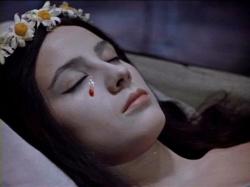
Viy
1967 -
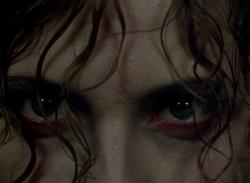
Black Narcissus
1947 -
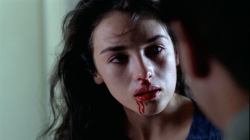
Possession
1981 -

Carrie
1976 -

The Devils
1971 -

The Sea Serpent
1984 -

The Dark Half
1993 -

The Baby
1972 -

Hellraiser
1987 -

The White Reindeer
1952 -

The Serpent and the Rainbow
1988 -

Endless Descent
1989 -

Prom Night
1980 -

Night Train Murders
1975 -

God Told Me To
1976 -

In a Child’s Name
1991 -
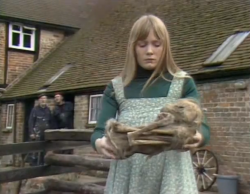
Beasts
1976 -

Prom Night II
1987 -

Men Behind the Sun
1986 -

DeepStar Six
1989 -

At Midnight I’ll Take Your Soul
1964 -

They Came Back
2004 -

Buried Alive
1990 -
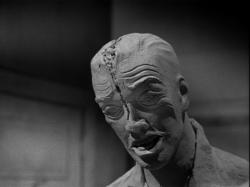
A Bucket of Blood
1959 -
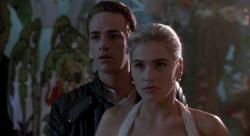
Buffy the Vampire Slayer
1992 -

Night and Fog
1956 -

It Came From Beneath the Sea
1955 -
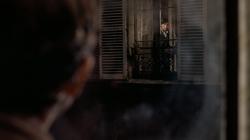
The Tenant
1976 -

Tokyo Gore Police
2008 -

The Rocky Horror Picture Show
1975
We don’t do comments anymore, but you may contact us here or find us on Twitter or Facebook.



